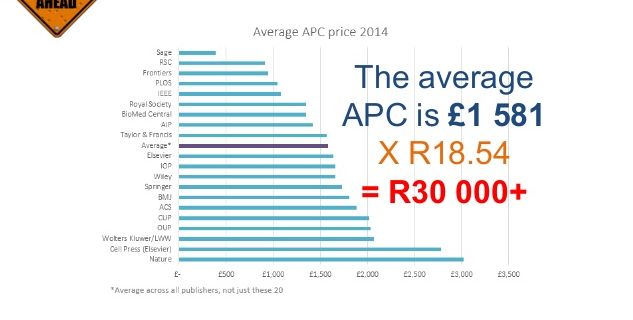
Article Processing Charges: Traditional vs Contemporary Gold Open Access Journal Publishers
Publishing on Gold open access or hybrid journals can only be materialized through Article Processing Charges (APCs). Traditional journals publishers (Elsevier, Nature, Wiley etc.) and the newly emerged Gold open access platforms such as PLoS, BioMed, PeerJ, Hindawi and F1000Research have something in common: they all charge APCs for review, editorial and hosting services they offer. Nevertheless, though the services they provide are pretty much similar, what is not the same across these journal publishers is the amount of APCs they charge. The amount of APCs authors pay significantly differs from publishers to publishers.
Except for PLoS and BioMed, one of the leading Gold Open Access journals, most of the open access publishers charge APCs lower than 1000 euros. For instance, SciELO and the Open Library of Humanities charge $100 and $500 per article, respectively. In most cases, what Hindawi and PeerJ charge is not more than $500. On the contrary, traditional journals publishers charge APCs well above $2500 per article. Nature charges €3700 for Nature Communications journal. It’ is obvious that there is a substantial gap between traditional publishers’ APCs and newly emerging Gold open access platforms. What is creating this APCs discrepancy is what Jonathan Tennant tried to find out.
Tennant says the traditional publishers charge so much APCs because of inefficiencies and paywalls. He believes that traditional publishers enjoy around 40% profit margin. Thus, they are not under pressure to eliminate inefficient practices that would lead to lower APCs. These publishers put money into protecting copyrights; they invest a significant amount of money to keep scholarly materials they publish behind paywalls, which fully open access publishers do not. These also bring extra administrative challenges and cost, which force them to push APCs up.
According to Jonathan Tennant, APCs for low impact factor journals are incredibly low: as low as $100 per article. Nonetheless, it is not realistic to achieve cost natural open access publishing. Tennant claims, however, that it is possible for traditional publishers to cut APCs by up to 72% to 90%. This is the best deal authors or taxpayers can get. Currently, he argues, authors and research funders are not properly negotiating with traditional publishers so they can reduce APCs significantly while still maintaining a healthy profit margin.
Reference

